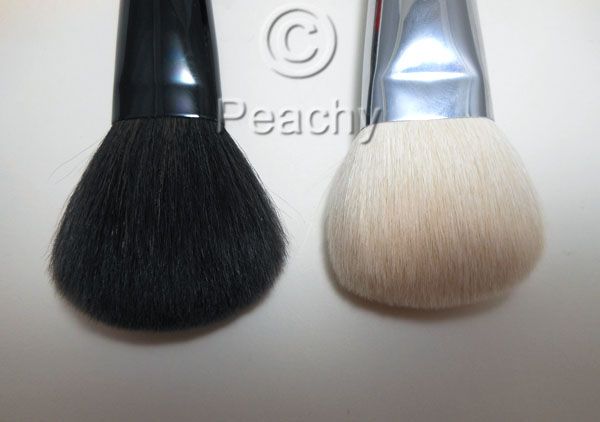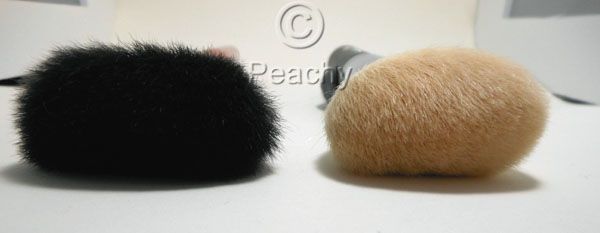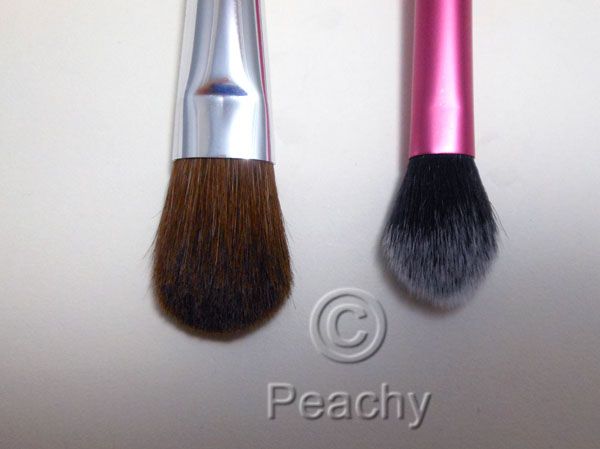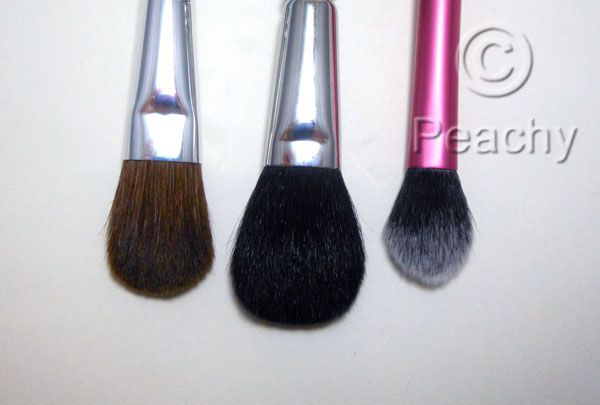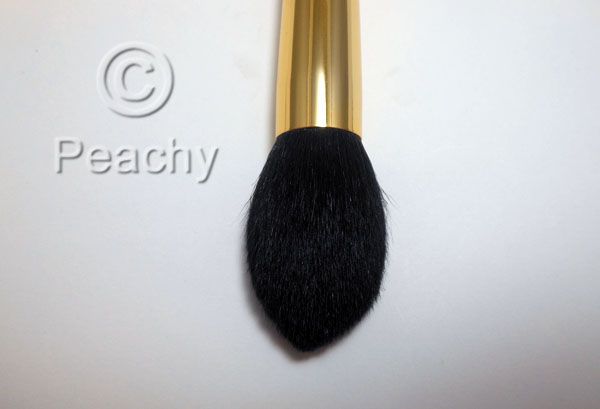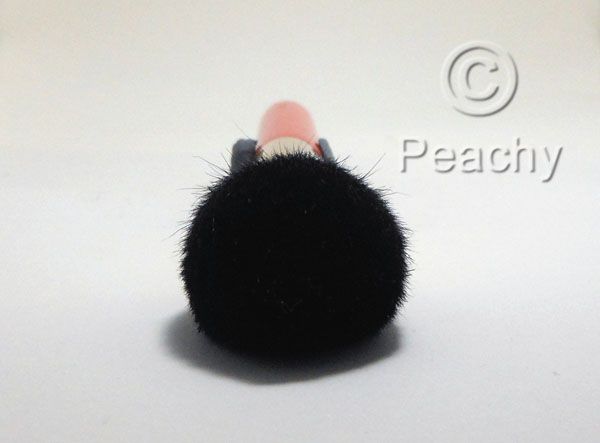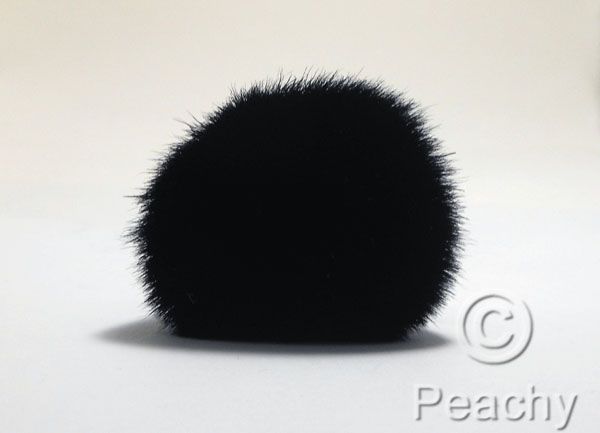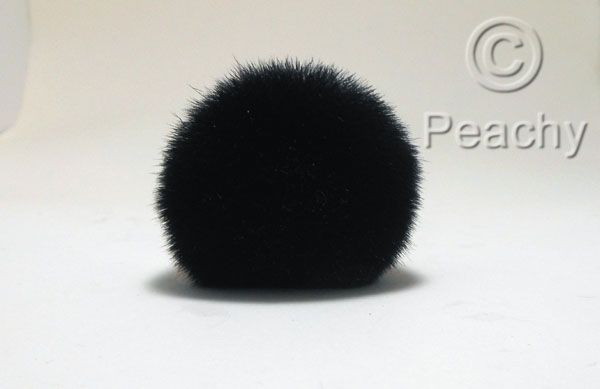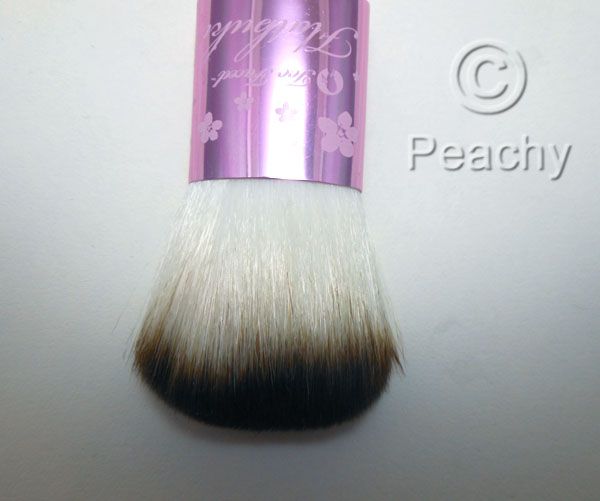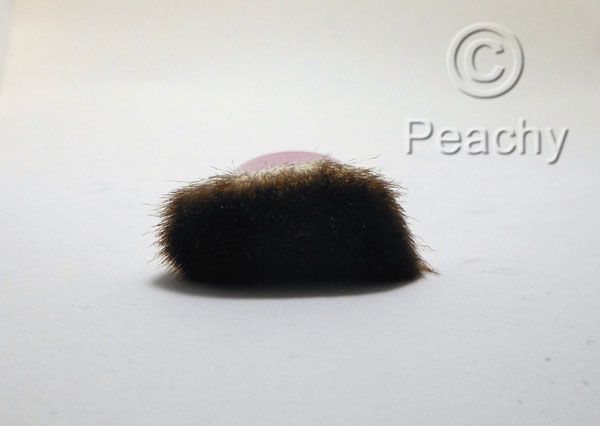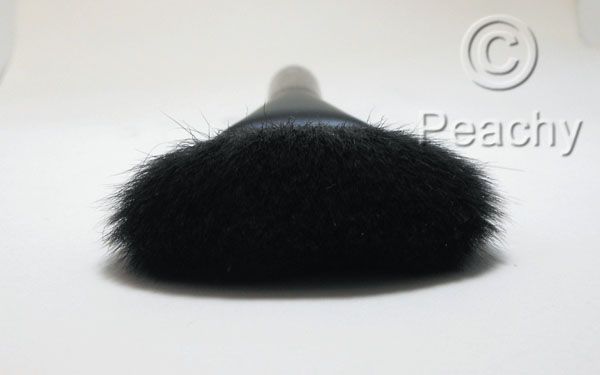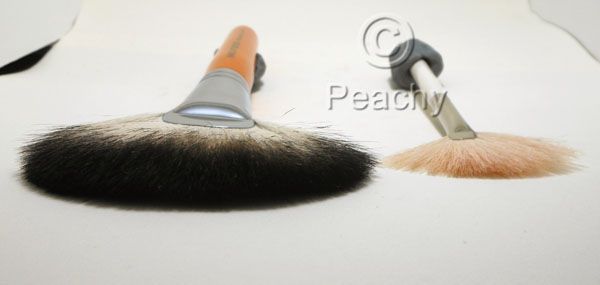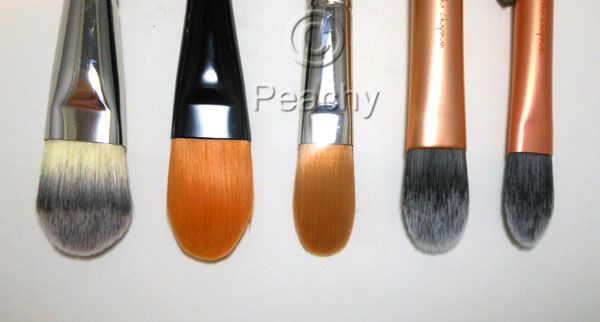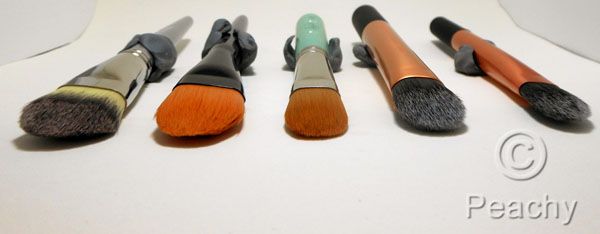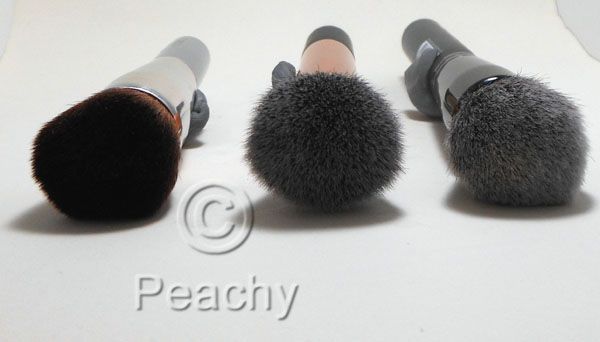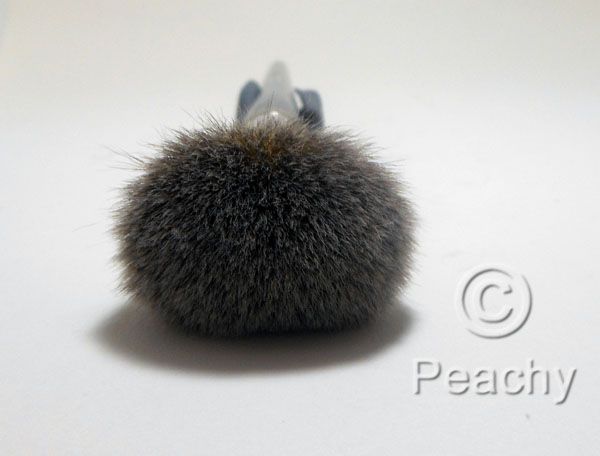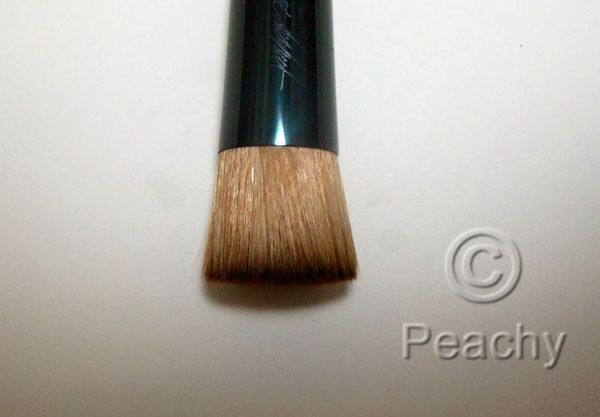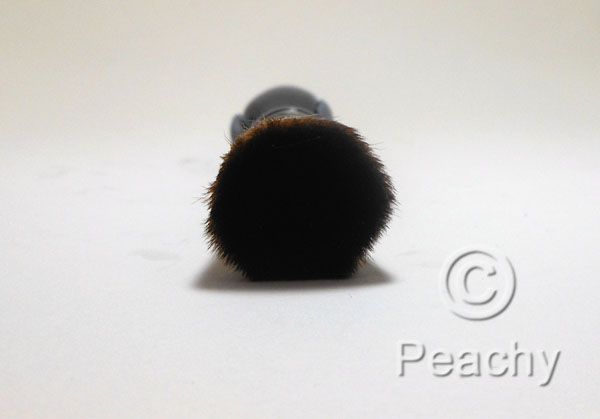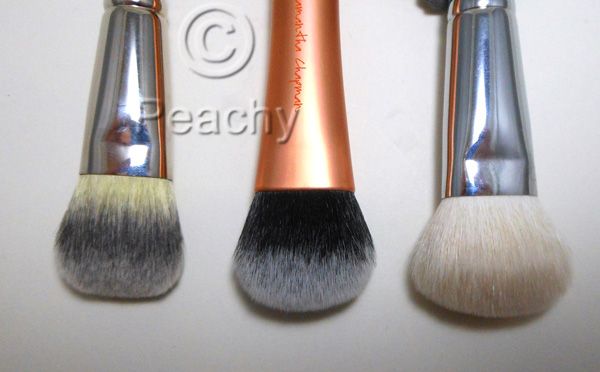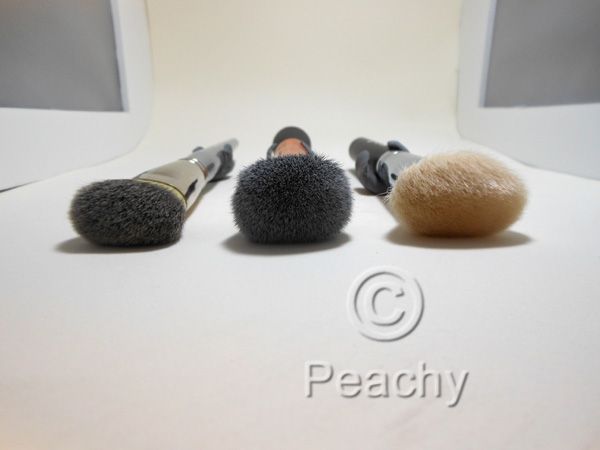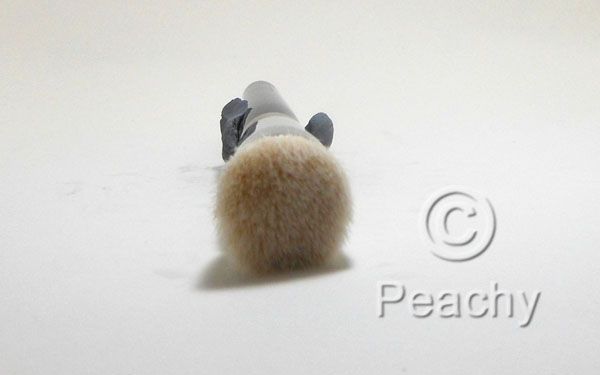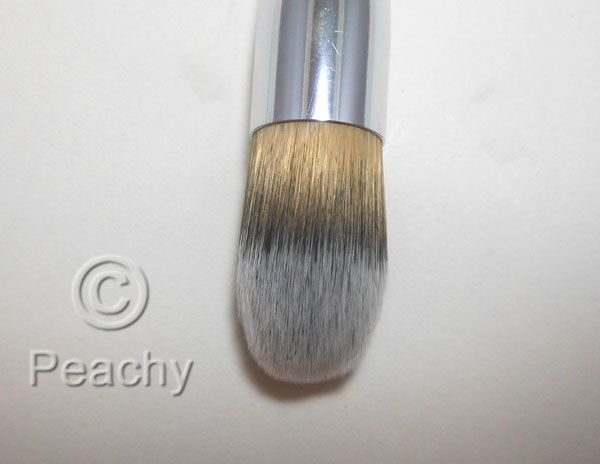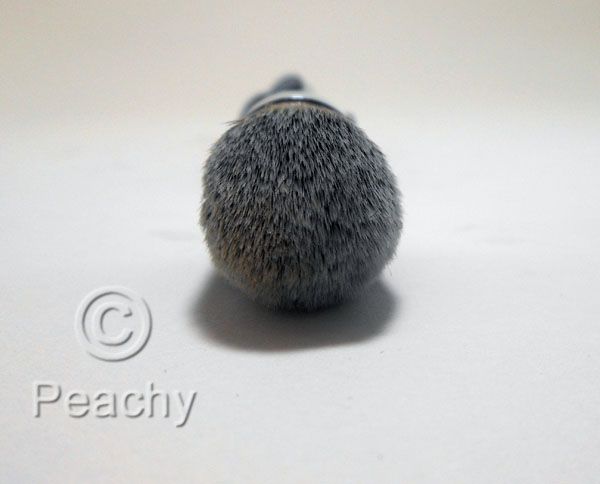Powder brushes really don't need much introduction, do they? They're used to either apply powder or to remove excess (old school style!)
Large Powder Brushes
I probably should have put a smaller brush for comparison with these suckers because they are huge. Pictured here are a Smashbox 1 and Cover FX Powder Foundation Buffing Brush 190, which is goat, and they are good for applying powder over the face, especially if you have a large face. They're so big, they're best for applying powder as a first or second step; that is, if you are wearing powder foundation, or loose powder over your whole face on top of tinted moisturize, this is a good brush to do that with. If you'd rather apply a controlled application of powder around already made up eyes and lips, or just to the T-zone, these are not the brushes for that. In fact, they are so large, some people might find them better for use on the body, to apply shimmer powder on decolletage or shin bones and clavicle or to set a large tattoo cover.
If you are a fan of vintage makeup or stage makeup, then you probably know that the "classic" use of a powder brush is not to apply powder but to remove it. I always cringe when I see someone try to "set" makeup, like cream foundations, with a brush. Even when pouncing it on the skin (something I have seen YouTube's Pixiwoo sisters do) doesn't seem to lock it onto the skin the way a puff does. To set makeup, a puff should be dusted with powder then pressed into the skin. Any excess powder is then dusted off with a brush. Uh, yeah, this is the type of brush you want to use for that.
Small Powder Brushes
Do you remember how I said above that the large brushes were too large for concentrated powder application? These brushes are what you want for that. Small brushes like the Sue Devitt Powder Brush, pony hair, and the Real Techniques Setting Brush, synthetic, are great for going around lips, eyes, and nose, for applying powder to the T-zone. If you apply powder as a last step, then you want a small brush. They are also good for setting powder under the eyes, or applying powder to the eyelids.
Aside from powder application, these small brushes are good for applying highlighter to the cheekbones and blending it down the nose. I also often use whatever powder brush I use on a given day to additionally blend my blush into my base.
Oh look! I remembered a comparison photo for these babies! This is a MAC 116 blush brush to show you how tiny these brushes are.
Pointed Powder Brush
Another larger style brush, this Hakuhodo S103 goat hair brush works more like a smaller brush due to it's compact shape. I have to admit to wanting to quote my idol, Lisa Eldridge, and call it directional like she would, but I'll refrain. It's good for applying powder in small areas and around features, but can also apply a layer over the whole face.
The pointed powder brush is also amazing for applying brush to all parts of the cheek, and is superb for applying contour under the cheekbones, around the jaw, down the neck, around the clavicle. In fact, I love it for contour so much that I probably should have put it under that heading. It's also an awesome powder brush, though, and is the brush I'd most suggest if you came here looking for one brush to apply all powder face products.
Flat Topped Powder Brush
This brush, a Hakuhodo G527 goat hair brush, is a cousin to the flat topped foundation brush, and is, in its essence, a buffer. It's great for buffing in powder foundation, which is what I usually use it for. It's also a great blender for getting blush, powder, highlighter, and foundation seamless. I know some people would use it to buff powder onto the whole face. I don't do that. Just talking about it makes me squeamish. I'll buff in foundation, powder foundation, blush, even, but I'm very protective of my foundation and especially my concealer, once they are applied. See my vent on setting makeup above. Perhaps it's my oily, naturally shiny skin that makes me so anti-buffing when it comes to powder. Nearly everything will move on my skin, so once I apply foundation and concealer, I want to set it and then not mess with it. I have enough problems covering the red spots blemishes leave on my chin than to risk removing my concealer with buffing.
Now that I've dealt with one pet peeve about this sort of brush, it's time to deal with the real question you're asking is: Can you use it for liquid foundation? I never have. I usually use synthetic brushes for foundation, with the occasional white goat hair detour, so I would never use a dense natural hair brush for liquid foundaton simply because I wouldn't want to subject such a brush to the cleaning I give my foundation brushes. I can't even imagine how much cleaning liquid foundation out of this thing would be! Also, I prefer rounded edges on my buffing brushes, since faces are more round than flat. I'm making this brush very complicated. It's a good powder buffing brush, end of story.
Kabuki Brush
Another buffer, this synthetic Make Up For Ever kabuki brush, is used to buff powder. I will not bore you again with my diatribe on buffing powder over foundation. This brush is good for finishing, blending everything together, buffing on powder foundation.
This one came in a set with the HD Microfinish powder, and I still don't know why. I have brushes I like better to apply powder foundation with, so this one just sits in a drawer.
Flat Kabuki Brush
This is a flattened kabuki brush, and is a cute little mini from Too Faced, called a Flat-buki. It's good for flicking powder off the face after applying too much. Really, it's just a cute tiny brush. Good for travel.
Finishing Brush
This Hakuhodo Finishing Brush L, made of blue squirrel and synthetic hair, is pure luxury. It isn't a necessity. It's also not something to save on; it's a splurge, no doubt. It's also akin to rubbing a bunch of kittens over your face. Not that I've done that. But I imagine it would feel good unless claws got involved.
This brush is used for brushing over the face as a last step, softening edges without moving anything around (which is good, remember?). It can also apply a finishing powder, like Guerlain's Meteorites.
Fan Brushes
Fan brushes like the Make Up For Ever powder fan brush and Benefit fan brush (goat), are good for brushing away eyeshadow fallout. They are also good for contour and highlight. The smaller fan brush is especially good for highlighter and softening super-pigmented blushes.
They are also excellent for removing powder after it's been applied. Look, at this point, we all know that powder brushes apply powder--do I really need to say it again?
Pros and Cons
Pros: Unless you want to try applying powder with your hands (don't laugh, it can be done), you'll probably need a powder brush. Even if you favor a puff, a brush will remove the excess and leave only a fine layer. A large powder brush will dust powder over the whole face quickly, while smaller powder brushes apply it to one small area at a time. If you want a powder brush that does everything from all over powder application to cheekbone contour, I'd suggest the pointed powder brush. Finishing and Fan brushes finish the face and provide a delicate finish. Flat top and kabuki brushes are great for applying powder foundation, including mineral foundations.
Cons: As brushes go, the price point of all of these is higher than average, due to their larger size. Furthermore, uncut ends, recommended for use with all powder products, but especially when you are using it over the skin, will make the price go up. I will say this one more time: if your makeup needs to be set with powder because it doesn't set on its own, for example a cream (not cream-to-powder) foundation or blush (basically, if your grandmother might have worn the product back in the day) or a liquid foundation that doesn't dry down, a brush is not the powder utencil to use.
The brushes featured in this post are: Smashbox 1 Powder Brush, Cover FX Powder Foundation Buffing Brush 190, Sue Devitt Powder Brush, Real Techniques Setting Brush, (MAC 116 Blush Brush), Hakuhodo S103 Powder-Blush Brush Pointed, Hakuhodo G527 Powder Brush D, Make Up For Ever HD Kabuki Brush, Too Faced Flatbuki, Hakuhodo Kokutan Finishing Brush L, Make Up For Ever Powder Fan Brush, Benefit Fan Brush (discontinued). All were purchased and I received no compensation for featuring them.

